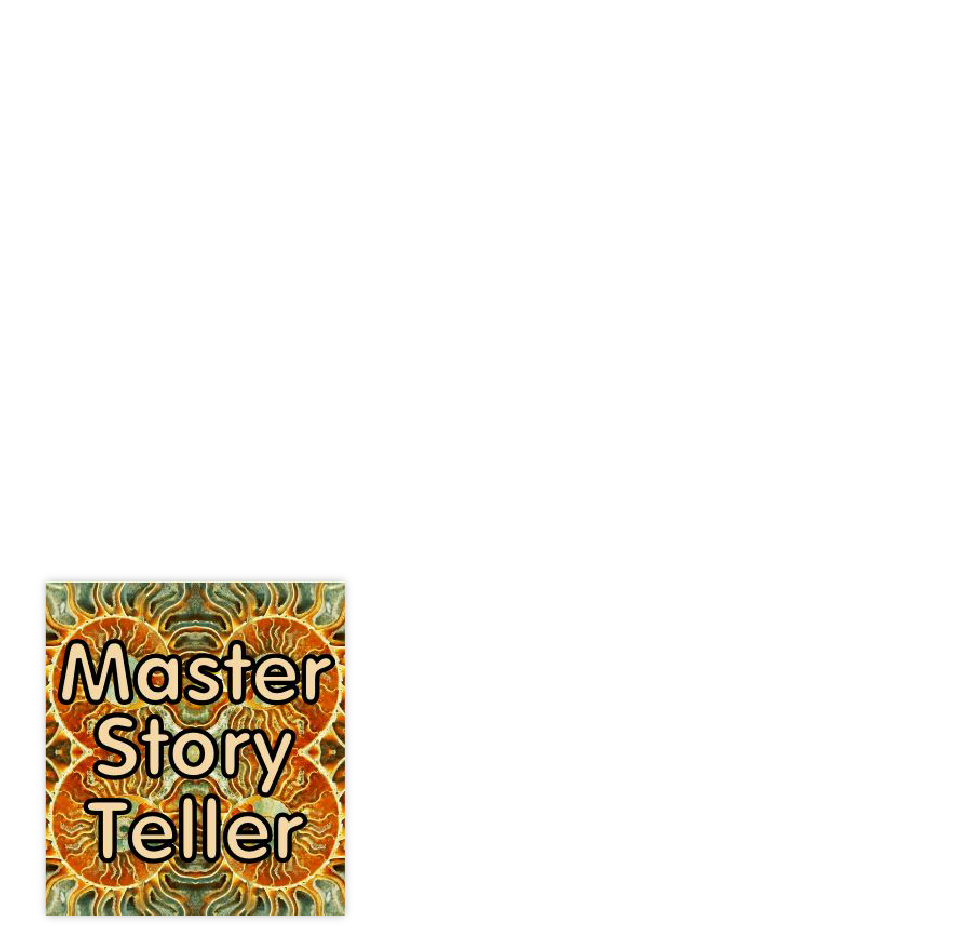





Melanie Anne Phillips
Creator of StoryWeaver, Co-creator of Dramatica, and designer of the Master Storyteller Method.
 Visit Our Store
Visit Our Store
Free, zippo, nada
gratis, on the house
$100 Complete
$100 / Hour


StoryWeaver and Dramatica
Two of the products designed / co-designed by Melanie Anne Phillips.





Copyright © Melanie Anne Phillips. Creator, StoryWeaver ~ Co-creator, Dramatica
Develop your story with…

In our last step, I provided a new development technique to those of you who are short of ideas for expanding and enriching your story. That approach, called the “Creativity Two-Step” should have opened up a floodgate of new concepts and pretty much put you in the same boat as all the other folks from the step before that who were wallowing in an overabundance of ideas.
At the end of each of those two steps, you were advised to marshal all your ideas together into a Thumbnail Sketch - a one-page document that pretty much describes all the principal notions of what your story is about. Odds are, however, that the resulting document is something of a mess with bits and chunks floating around in it without much organization.
Now if your Thumbnail Sketch turned out as a well-paced narrative in which you begin with a brief overview of your story concept in the first paragraph, then describe all the key events and character moments in your story as it will unfold sequentially, then you’re done! Skip the rest of this and move on to the next step, for God’s sake!
But, if you think your Thumbnail is a little wanky, even if in ways you can’t quite identify, or if you weren’t able to come up with one at all, then read on, and I’ll share with you the same tips I give to my consulting clients when they reach this stage. Oh, and just a reminder that you can always call for my services as a story guide and consultant just by clicking here and ordering an hour of time.
That out of the way, let’s see if we can whip your Thumbnail Sketch into shape….
The first thing about a Thumbnail is that is isn’t intended to include all the cool stuff you want in your story - not even close. It’s supposed to act as a really concise description of just the most essential material - the people, places and events that comprise the identity of your Story World and the major turning points in your storyline. In this way, you can refer to your Thumbnail throughout the development process to re-center your creative efforts and keep your Muse pointed somewhat in the intended direction (though there’s really no way to keep her from giggling off after some dog with a fluffy tail every now and again).
This is why the Thumbnail is limited to one page and no more - to keep the focus. Later, not too long from now, we’ll expand your thumbnail into a full-blown timeline. And not long after that, we’ll be dividing your timeline into sequences, scenes, and segments. And then you’re off to the races! But for now: one page max, key dramatics only, opening paragraph providing an overview, rest of the thing in generally sequential flow from beginning to end.
Now let’s go over each of those points in just a little more detail, and then I’ll leave you to it, and we can meet up again at the next step.
1. Whether you had a lot of ideas to begin with or came up with a bunch using the “Creativity Two-Step,” once you’ve got ‘em, it can be hard sometimes to pare it down to just the essentials. What I do is to make a list - like a shopping list - with every concept I’ve got, but in no particular order - just to make sure I don’t forget any. Then, I create a second list putting things in their order of importance to me. That’s a purely subjective decision, of course, but writing is a subjective process. And so you get to choose what’s at the top of your Priority List.
So, first you create a list of all the important elements you can think of in no particular order. Then, you take the first item on that list and copy it to the top of a whole new list - your Priority List. Now, go back to the first list and grab another item, crossing off or graying-out all the ones you use so you know what’s still left to transfer. If that item is less important, put it beneath the first item. If it is more important, put it above.
Just keep repeating this until you have all the story points from the first list copied into the second list, but this time in their relative order of importance, and you’ll have your Priority List. This will serve as the template for your Thumbnail.
2. The first paragraph of the thumbnail should be an overall description of what your story is about. So, start at the top of your Priority List and write something about the most important story point. Then move to the second item in the list and find a way to fold that into what you just wrote but keep it all in one paragraph. Keep on going until you reach a point where your paragraph beginning to become unwieldy or a bit convoluted. Then, remove a couple of the less important points to make it flow better, and you have your opening paragraph. Oh, and try to keep it to no more than one fourth of the page so you have room for the sequential presentation of your story.
3. Next you are going to create a rough timeline for your story. Note that stories are all about space and time. Space describes what’s in your story; time describes how it unfolds. If you ask a reader or audience member what a story is about after they’ve finished enjoying it, they’ll start to think of it spatially - what all the elements were that made an impression and how they all hung together, even though they experienced it in temporal order. That’s why we need to include both in a Thumbnail. So, in mini-step 2 above we handled the “what’s it about” spatial part. And now we want to layout how the story will play out - the “what happens next” part.
To begin, start a third list and list all the story points from the first list in the order in which they occur, rather than in their order of importance. As you do, you’ll likely find that some story points can’t really be easily classified as to when they happen because they are just about the general essence of the story.
For example if two of your story points are “John hits the baseball,” and “John runs around the bases,” unless you are writing a time travel story, the hit would come before the run because the reverse wouldn’t make any sense at all. But one of your story points was “john hates his teammate, Roger,” well should that come before the hit, after the hit but before the run, or after both? There’s really no way to tell because you are probably going to be doling out information about that general relationship between John and Roger throughout the story.
That kind of overall information is really what is supposed to go in the first paragraph of your Thumbnail. But in the rest of the Thumbnail, that’s where you put the truly sequential material, in the order in which it happens. So, list your points in sequence and then you’re ready to actually start writing the Thumbnail.
Writing your Thumbnail can be a bit of a chore. For example, if you are the wordy kind, you may get up to the end of the page and only be halfway through the telling of your story. That means you’ll need to lose some words or lose some story points or possibly to go back to the first paragraph and tighten up the overview. No matter how you approach fitting into a page, it will probably be a little taste of writer’s hell.
Oh, yes - I’ve had clients beg and plead (I’m not kidding you) to go just a paragraph over on the Thumbnail rather than kill any of their favorite ideas. But I have to tell them, nobody is going to see this Thumbnail other than you and me. It’s just a guide for your future writing, for crying out loud. But yet they persist. Fact is, in some cases I make an exception. Some stories are just too complex and too wonderful to boil down quite that far. But you didn’t hear that from me. And just keep in mind that this is supposed to be a “see it all in once glance” layout of your story - for reference only - so if you do write beyond the end of the page, you do so at your own peril.
4. Now one final word about the style of writing in a Thumbnail. It can be clever but it shouldn’t be overly literary It’s like CliffsNotes (Used to be Cliff’s Notes, after Cliff, then just Cliffs Notes with no apostrophe, and now it’s all one word, “CliffsNotes” - research pays). Make it fun but to the point and understandable. That way it is easy to follow, easy to find your place in it and, should it actually every find its way under someone else’s eyes despite what I said earlier, at least it will be presentable and can serve as the prelude to a pitch: first paragraph provides the lay of the land, the rest of it describes the story’s journey over that terrain.
To help you get in the groove ( man, that “groove” reference really dates me, which is totally righteous), here is a short example excerpted from a thumbnail I wrote a couple of decades ago based on an idea my son and I had developed together called, Snow Sharks: Don’t Eat Red Snow:
The conceited kid decides to make a break for it. He callously sends someone else out as a distraction, waits until the sharks converge on his helpless classmate, then charges down the hill toward the river. Sensing the quick movement, the sharks turn from the hapless classmate, sparing him, and move off in pursuit of the conceited kid. With the snow sharks closing, he reaches the edge and makes a flawless jump into the crisp air. In mid-flight, he raises his fist in triumph, just as one of the sharks bursts from a snow bank on the edge of the river and smashes into him in mid-air, halfway across. We cut to the pristine country side where blood splatters across the fresh snow as bloody pieces of meat snarl in the sharp branches of the pines. Across the river, his skis land perfectly, two bloody boots still attached, and disappear smoothly over a ridge.
Well, if I were my own client I’d tell me that had way too much detail, was too wordy and too full of imagery and the rest of the story would never fit in a page. So I’d have me re-write it like this:
The conceited kid sends another classmate out as bait so he can escape. He skies toward safety, but the sharks sense his movement and quickly converge on him. Just as he takes to the air to make it over the river, he is hit by the sharks, his skies and bloody boots landing safely on the other side.
I’d give the second version a C+, but it could still be tightened up a bit. Again, all those details in the original paragraph are great (or at least I like to think so) and can easily make it into the final piece. But for the Thumbnail, they have to be axed so we can see the real skeleton of what’s going on and keep in to a page.
That’s it then. Off you go…
(Next Step Coming Soon)


